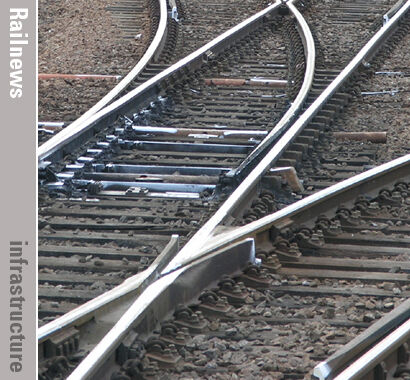A plan for a new railway to replace the axed sections of HS2 to Crewe and Manchester is being published today by the mayors of the West Midlands and Greater Manchester.
The proposal is for an 80km line between Lichfield and High Legh, which is near Warrington and just south of the M56 motorway. At this point it would join the Northern Powerhouse network.
The scheme is the result of work chaired by former Network Rail chief executive Sir David Higgins, led by Arup and involving a private sector consortium which includes Arcadis, Addleshaw Goddard, EY, Dragados, Mace and Skanska. Their plan is a bid to solve the problem of capacity north of Birmingham which will not be relieved by Phase 1 of HS2 between London and the West Midlands.
The mayors say the new line would cost 60 to 75 per cent of the HS2 line, and allow speeds of up to 300km/h. As a result, the journey time between London and Manchester would be 30 minutes shorter than at present, and only about 15 minutes longer than would have been achieved with HS2 throughout.
The line would be built in two sections by a private consortium as a Staffordshire Connector and a Cheshire Connector, which would be joined at Crewe.
The Staffordshire Connector would make use of land and powers already secured for HS2 Phase 2A, while the Cheshire Connector would require land north of Crewe being secured through future consents for Northern Powerhouse Rail.
The report says that by making use of land already bought for Phase 2A between the West Midlands and Crewe, it would save taxpayers some £2 billion in costs from the HS2 Phase 2 cancellation by reusing much of the land, powers, and design work that has already been paid for with public money. The report points out that ‘other approaches would be able to make only minimal (if any) use of these “sunk” costs’.
The report concedes that the design at Crewe will be ‘challenging’, because of the complexity of the existing railways in this area, and that one option could be a new north-south avoiding line for through trains.
Transferring passenger trains to the new line north of Birmingham would release additional paths for freight on the West Coast Main Line, which the report says ‘is the most heavily-used freight corridor in the nation’.
It continues: ‘This will greatly contribute to the Government’s target of 75 per cent rail freight growth by 2050, a key pillar in reducing carbon emissions from transport.’
The report also points out that ‘“doing nothing” on this corridor is not a viable option, from either economic or operational perspectives’.
Greater Manchester Mayor Andy Burham said: ‘The report is clear: if we fail to put in place a plan soon to fix rail capacity and connectivity between the North and the Midlands, the already-congested West Coast Main Line and M6 will become major barriers to economic growth in the UK.
‘But there is good news for the Government. The report concludes that we do not have to revive HS2 to unlock those benefits. There is a viable option to build a new rail line between Lichfield and High Legh, connecting HS2 to Northern Powerhouse Rail, with almost all of the benefits of HS2 delivered quickly and crucially at a significantly lower cost.
‘Doing nothing is not an option as demand for rail services on the West Coast Main Line is set to exceed capacity within a decade. We are ready to work with Government, colleagues in the West Midlands and the business community to build a railway fit for the 21st century. But we do need early decisions to end the uncertainty.’
Recently-elected West Midlands Mayor Richard Parker added: ‘This report confirms what we’ve been saying – additional rail capacity to and from the North is vital for the West Midlands. It’s about more than quicker journeys; it’s about connecting people, communities, and businesses to jobs and opportunities.
‘I’ll work with the government to ensure this happens, but we must also learn from successful rail systems around the world to deliver the best network and real value to the public. Without this extension, we will continue to be reliant on the West Coast Main Line, which is already maxed out and impacting on the people of this region and wider. We need to free up capacity and we need to get this right – for our future and our economy.’
Sir David Higgins, who when he was at Network Rail once told Railnews ‘we are trashing the West Coast Main Line’, said: ‘Our review sets out a plan to get connectivity between the Midlands and the North West back on track. We don't pretend that solving the rail challenges between these two places will be easy. We know it will be hard graft. What we need now is for the new government to work together with the business community and Combined Authorities – take the practical steps to make a new rail link a reality. We have conclusively shown that a new line can be built cheaper and faster – we now need to get on and deliver it.’


